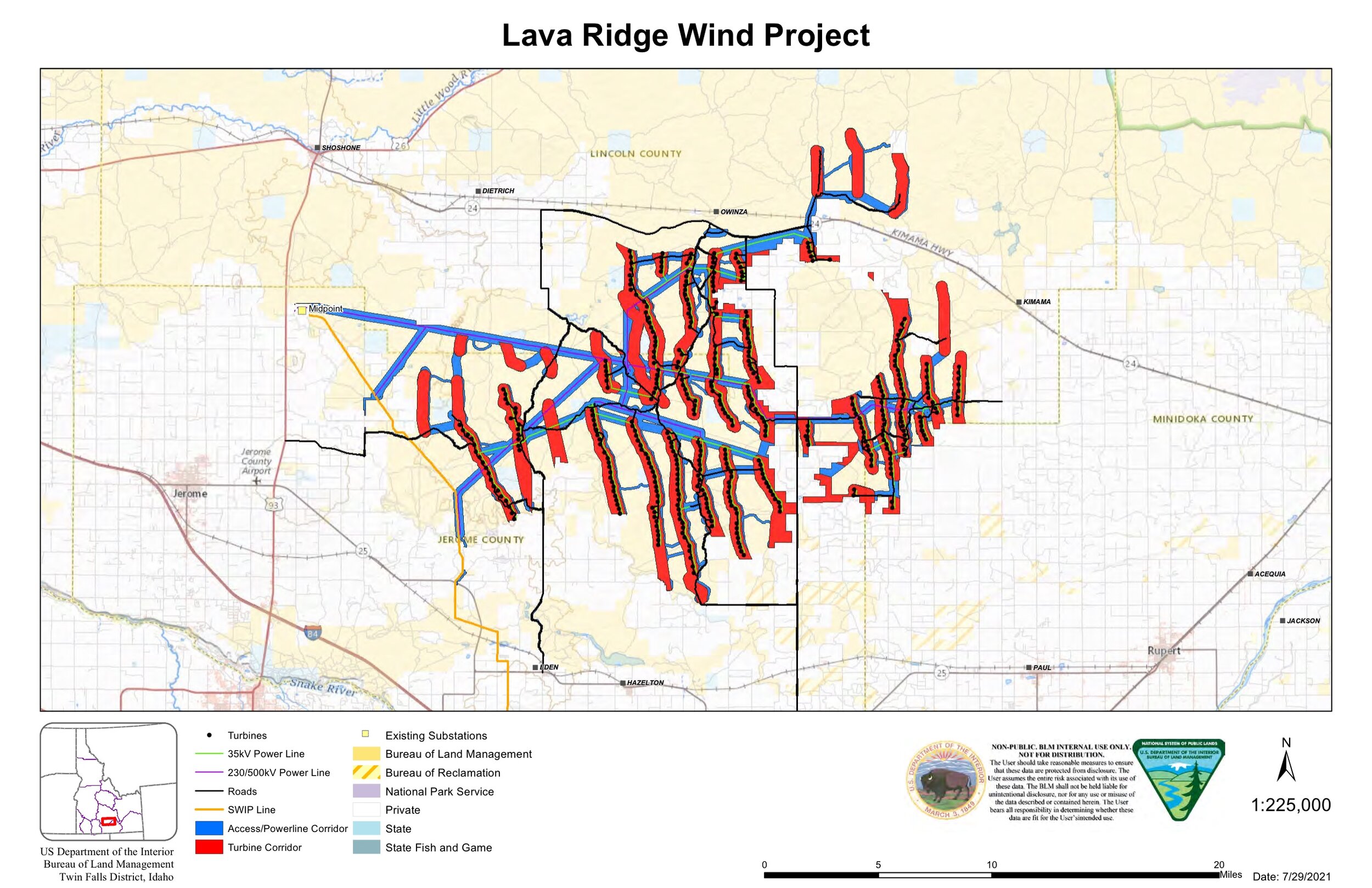Wildlife, hunting impacts must be analyzed In Lava Ridge Wind Project
The Bureau of Land Management is undergoing the first round of public comment for a proposed wind energy project in southern Idaho. While still in the initial stages of analysis, the Lava Ridge Wind Project has the potential to be the largest wind project in Idaho and operate for 30 years or more.
Magic Valley Energy (MVE) plans to construct up to 400 wind turbines on 73,000 acres of BLM land and 3,000 acres of private land, and construct 381 miles of access roads in order to develop Lava Ridge’s 1,000 megawatt capacity.
Map of the proposed Lava Ridge Wind Project, approximately 25 miles northeast of Twin Falls.
Let’s start with this: Responsible development of renewable energy projects is a step towards reducing our country’s carbon emissions. However, responsible is the key word. All forms of energy generation - renewable or consumptive - have varying degrees of negative impacts to our fish and wildlife and may not be appropriate with certain placement. For instance, hydropower can be a good source of energy, but dams placed on the Snake River have had a devastating impact on Idaho’s salmon and steelhead. Similarly, large wind projects can have harmful impacts to big game and birds. What we must then consider are the impacts to wildlife and hunting opportunity that may occur on the BLM lands that Magic Valley energy wants to call home for the Lava Ridge Wind Project.
This is the scoping period for the Environmental Impact Statement (EIS). A scoping period is your chance to let a federal agency know what potential cultural and environmental impacts must be analyzed before proceeding. It is important to remember this is not the “oppose” or “support” stage. Such comments are useless at this stage because there is no substantive plan yet on the table. After scoping, the BLM will enter the study/analysis phase, diving into the concerns and questions submitted by individuals, organizations, and even other agencies. With that in mind:
IWF is raising the following points in our comments during the BLM’s scoping period to guide the analysis in the EIS.
The BLM must consider and develop alternatives that minimize or avoid impacts to big game species and their winter range.
When habitat is lost directly through conversion to infrastructure and through ungulate behavioral avoidance, the carrying capacity of that species is reduced. The BLM should take steps to minimize this impact, especially to pronghorn and mule deer.
Direct and indirect impacts to hunting opportunity and to the Region’s outdoor recreational economy must be considered.
Of the 1.17 million acres of GMU 53, about 28% is BLM land. The Lava Ridge Project’s footprint steps on about 22% of the total BLM land (and most contiguous BLM land) within GMU 53. What functional habitat is available may be lost due to the project’s infrastructure and disturbance. What does this mean for the future of sporting opportunity in this area?
The EIS must analyze cumulative impacts to sage-grouse and develop alternatives that minimize or avoid activities that would threaten populations on a short, mid, and long-term timescale.
As we covered earlier this year, we are watching a 3% yearly decline in sage-grouse across their 11-state range- amounting to an 80% decline since 1965. The BLM needs to analyze adequate buffers around sage-grouse leks to avoid disturbances on this iconic, but struggling, Western game bird.
There are other initial concerns IWF has, such as fence construction, increased fire risk, and introduction of invasive species. By raising these concerns early on, we can help ensure that the BLM and MVE study all potential negative impacts so sportsmen can get a full and honest analysis of impacts to wildlife and hunting. When this information is made available months from now we will be equipped to make the call.
IWF’s full comments will be available for viewing soon. Submit your own concerns and subjects for analysis below! The deadline has been extended until October 20th.
UPDATE: View IWF and partner comments submitted during the scoping period here.

